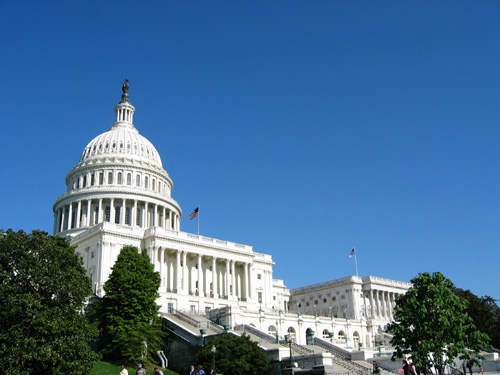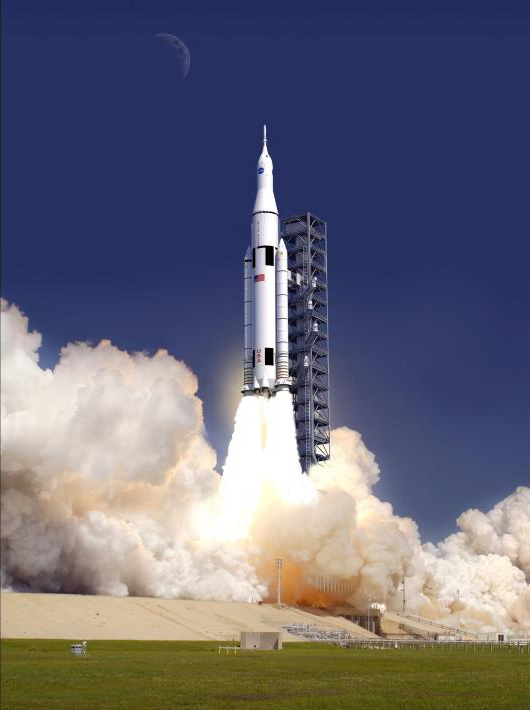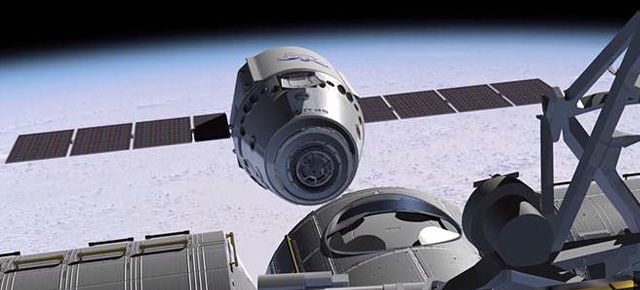NASA Chief Defends Space Budget Needs to Congress

NASA chief Charles Bolden defended the U.S. space agency's proposed 2013 budget to members of Congress Wednesday (March 7) in a pair of tense congressional hearings that, at times, drew harsh criticism from lawmakers.
Under the Obama administration's 2013 budget request for NASA, the space agency would receive $17.7 billion, a $59 million drop from its 2012 funding level. However, it wasn't the total tally, but rather the allocation of funds within that pie, that garnered the ire of senators Kay Bailey Hutchison (R-Texas) and Bill Nelson (D-Fla.) during the first of the two hearings.
The Senate lawmakers attacked the budget request for prioritizing the commercial crew program — NASA's attempt to stimulate the development of private spacecraft to carry astronauts to low-Earth orbit — over the agency's in-house effort to build a deep space rocket and capsule.
"I am committed to commercial being a part of our future, but not at the expense of our vital NASA employee sector and the building of the next vehicle that's going to take us beyond where we are," Hutchison said during a hearing before the Senate's Commerce, Science and Transportation committee."We can't fudge on the future in that way." [NASA's 2013 Budget: What Will It Buy?]
Staying on schedule
Bolden defended the budget request, saying it allocated enough money to make sure NASA reached its goals of launching the first test flight of the deep space rocket and capsule — called the Space Launch System (SLS) and the Orion Multi-Purpose Crew Vehicle (MPCV) — in 2017, and the first crewed flight by 2021.
"Those are hard dates, and they're evidence that we are pushing forward," Bolden said during the Senate hearing in Washington, D.C today. A second session that focused on NASA's budget took place in front of the House Committee on Science, Space and Technology later in the day.
Sign up for the Live Science daily newsletter now
Get the world’s most fascinating discoveries delivered straight to your inbox.
But the senators weren't satisfied with that answer.
"I don’t doubt your sincerity in shared goals, but what I'm very concerned about is the implementation that is reflected in the numbers of the budget that the president released," Hutchison said.
She pointed to the fact that the 2013 budget request allocates $326 million less to Orion and the SLS than they received in 2012. The commercial crew program, meanwhile, would get a boost of more than $400 million over last year's funding level, to $830 million.

Bringing in the private sector
NASA's commercial crew program aims to spur a number of private-sector space companies to develop rockets and capsules to take people to low-Earth orbit and the International Space Station. In the wake of last year's retirement of the 30-year space shuttle program, NASA is left without a spaceship, and has had to pay Russia to ferry its crews to and fro in the meantime.
The agency is hoping that outsourcing this job to commercial American companies will allow the agency to focus on the more ambitious goals of building Orion and the SLS to take astronauts to an asteroid and to Mars. [Photos: NASA's New Spaceship for Asteroid Trips]
"I need to get American crews to station on American vehicles, and decreasing the amount of money will not help close that gap," Bolden said. "I know it doesn’t seem like it, but this is going to be cheaper for the American taxpayer in the long run."
Bolden stressed that NASA's deep space vehicles would still get the funding they needed to stay on schedule, and that those spacecraft are comparatively further along than their commercial counterparts.
"I am much more confident about SLS and MPCV, and that may be the reason that it appears that I'm not passionate about it," Bolden said. "I'm incredibly passionate."
The senators agreed that the commercial crew program is worthy of funding, but charged that any boost to its budget must come from somewhere other than the NASA vehicles in the works.
"With a limited amount of money, we know we're asking you to do an awful lot," Nelson said. "What we need to do is work with you at coming up with a number for commercial and not at the same time sacrifice anything on the big rocket or Orion."
At the House hearing, however, Bolden reminded lawmakers that the $406 million allocated to commercial crew last year was less than half of what NASA requested.
That reduced funding hampered the development of private spacecraft, pushing the operational start date of manned commercial orbital vehicles to 2017 at the earliest, he said. Bolden emphasized that granting the full $830 million to commercial crew next year is critical to prevent further slippage.
"The gap between now and 2017 is excessive," Bolden said. "A gap that increases would be unacceptable, and that's the reason we came back and asked for a restoration of funds for the commercial crew program."

Cutting planetary exploration
At the House hearing, several Congressmen took issue with other aspects of NASA's proposed budget for fiscal year 2013, which runs from Oct. 1, 2012, through Sept. 30, 2013.
Specifically, they decried the fact that the budget request cuts funding for robotic planetary exploration by $300 million, a 20 percent reduction from last year's levels. This cut, and further reductions proposed for future years, have caused NASA to back out of European-led Mars missions in 2016 and 2018, and to fundamentally restructure its Mars exploration program.
"Speaking now about planetary sciences as well as Mars, I'm puzzled that NASA would choose to cut one of its most productive and successful science programs in this era of tough choices," said committee chairman Ralph Hall (R-Texas). "Typically, good behavior is rewarded. But in this instance, it appears that NASA successes at Mars, Saturn and Mercury have garnered the opposite reaction."
Bolden acknowledged that a challenging fiscal environment forced NASA to make difficult decisions. However, he insisted that the 2013 budget request keeps NASA on track to keep doing good science at Mars and other destinations throughout the solar system. [NASA's 10 Greatest Science Missions]
"The budget we submitted supports an ambitious exploration program," Bolden told the House committee.
Half a penny on the dollar
While the whole federal government is strapped for cash lately, one presenter at the Senate hearing argued that a significant increase to NASA's total funding would pay off dividends in the future.
NASA currently receives about half a penny from every tax dollar.
"I say take it to a penny," astrophysicist Neil deGrasse Tyson, director of the American Museum of Natural History's Hayden Planetarium in New York, testified before the Senate.
A major boost of funding to NASA "would reboot America's capacity to innovate as no other force in society can," Tyson argued. "Beyond the spinoffs, what matters are the cultural shifts in how the electorate views the role of science and technology in our daily lives.If all you do is coast, eventually you slow down while others catch up and pass you by."
"You are not only preaching to the choir, you are preaching to the preachers," said Nelson, who counts himself one of the most steadfast supporters of NASA in Congress.
"As goes the future of NASA, so too does the future of this nation," Tyson said.
This story was provided by SPACE.com, a sister site to LiveScience. You can follow SPACE.com assistant managing editor Clara Moskowitz on Twitter @ClaraMoskowitz. Senior writer Mike Wall (@michaeldwall) contributed to this story. Follow SPACE.com Twitter @Spacedotcom and on Facebook.












